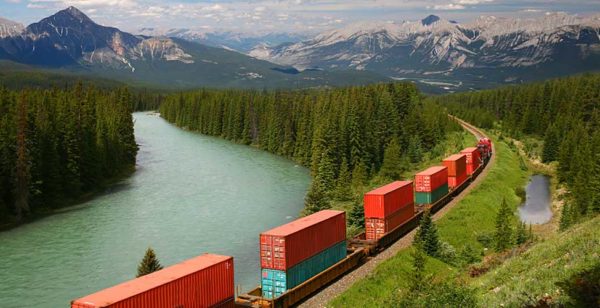It seems that regardless of where you’re located in the world, you’re seeing shipments of a number of products being bogged down. When you look at, as an example, consumer goods for groceries, clothes, etc. you’ll often find shortages of certain brands, complete categories reduced to a few brands being available, less choices in consumer goods or inventories that run just behind the time required to place them on store shelves. This holds true across bulk commodity industries as well. Shipments of bulk scrap, grain and grain products and other industrial products aren’t having their logistics needs met. Longer wait times for rail service, significant delays at the ports for railroads, trans-loaders, and bulk and container shipping companies are deep in slowness. Heck as of this writing there was a large container ship stuck (run aground) in the Suez Canal that runs from the Mediterranean to the Red Sea in Egypt! Bet the owners of the goods on that ship aren’t pleased. We’re working with a large number of shippers that are seeing the grain, scrap, steel, minerals, specialty chemicals shipments they typically ship via rail direct to ship or from bulk to containers at the port showing significant delays. Grain and intermodal traffic seem to be leaders of the charge according to the Association of American Railroads (AAR) weekly originated rail traffic.
All this strife causes world logistics impacts that reverberate throughout individual countries domestic supply chains. Managing these domestic supply chains is imperative to the fluidity of your operations. When talking about railcar shipments the approach to simply know where your railcars are and what they are doing, e.g. moving, setting in place and not moving for no reason evident, bad ordered, stuck behind an impediment (note the weather delays we’ve seen in the first quarter 2021) or lost in the system, are important. The old adage “the squeaky wheel gets the grease” is true to a point in managing railcar shipments. Daily tracking of railcars will tell you a great deal about your supply chain. There are three focus areas of tracking railcar shipments these are: the shipments that you originate; the shipments that someone else originates and ships to you; and, the empty return of private railcars to your loading facility. If you ship into the export market you may also want to track ocean vessel and barge progress. If you’re solely a domestic market shipper meaning you don’t export any product the world market still effects your shipments. All railcars generally run on the same tracks whether they’re going to be used in export or domestic consumption.
To be effective in motivating railroads to transport your railcar shipments timely it’s important to stay within the process. Each railroad has a customer assistance portal on its’ website. Find these and register your concern about delayed shipments. Watch the follow up you receive and if its satisfactory you’re back to daily monitoring. If it’s not satisfactory elevate to a live person within the customer service organization. If that’s not satisfactory you’ll need to make contact with personnel in the field. The railroads don’t readily publish this information but it seems with enough tenacity (grease) you can usually find someone local to your delayed railcar that can give you a more accurate assessment of the situation. Remain civil in all communications. This is important, that person doesn’t want a delayed railcar within their operating jurisdiction any more than you want to have one there.
Whatever system or outsource company you employ its’ important to be able to quantify your movement data. Identifying bottle necks that can be discussed with your marketing representative is key to resolving conflict areas. Management reports should easily be generated for reference and discussion. This information is also important to provide the base data for demurrage exceptions and to substantiate orders and shipments. All data converted to information is powerful as long as you know what to do with it.
Tealinc provides shipment management services for our internal railcar lease customers. We find that more efficient operations generally translates’ into better customer relations and in turn translates into a better return on the product. Keeping customers informed and abreast of the movements of their railcars is a good way to demonstrate value. The world logistics system is bogged down but yours doesn’t have to be.
How are your assets performing?

